The engine begins to stall as we ascend the hill. “Shift to first gear or we won’t make it!” cried Kaelin. I could feel small lurches as the engine struggled to climb in second gear. I let go of the gas while instantaneously slamming the clutch down to the floor, my hand moving in unison towards the stick shift as I pulled it out of second, all the way left and up into first.
The car lurched madly. An impending signal of my demise. Already a line of impatient Portuguese drivers rallied behind me, following closely like the tail of a Chinese dragon.
Only this dragon didn’t want to exist.
It was day two of our honeymoon in Lisbon. We decided to travel outside the city and into nature, exploring the Palácio Nacional da Pena (Pena Palace). I was already nervous about driving after our first escapade. The intense pressure not to scrape cars, buildings, or pedestrians in the tight Lisbon streets, along with countless stalling in the middle of several intersections made my blood pressure beat faster than the rhythm of a Greek folk-song.
The day began with a classic Portuguese breakfast of toast, biscuits, and grapefruit juice. The public lounge was a small deck overlooking the southside of Lisbon. The sun was to our backs and behind the buildings, making the temperatures ten degrees colder than expected.
Cautious about my parking job from yesterday, I approached our car with the expectation of damage to the frame. Fortunately, none were present.
Mamma mia, I’m using up all my one-time miracles.
After the first thirty minutes of navigating small streets, propane trucks, and morning commuters, we left the streets of Lisboa and were welcomed by smooth, paved, and—most importantly—straight roads of the A37. I was finally able to shift into 5th gear and let the car cruise.
Kaelin was the first to spot the Palace in the distance, proudly situated up on a hill overlooking its territory.
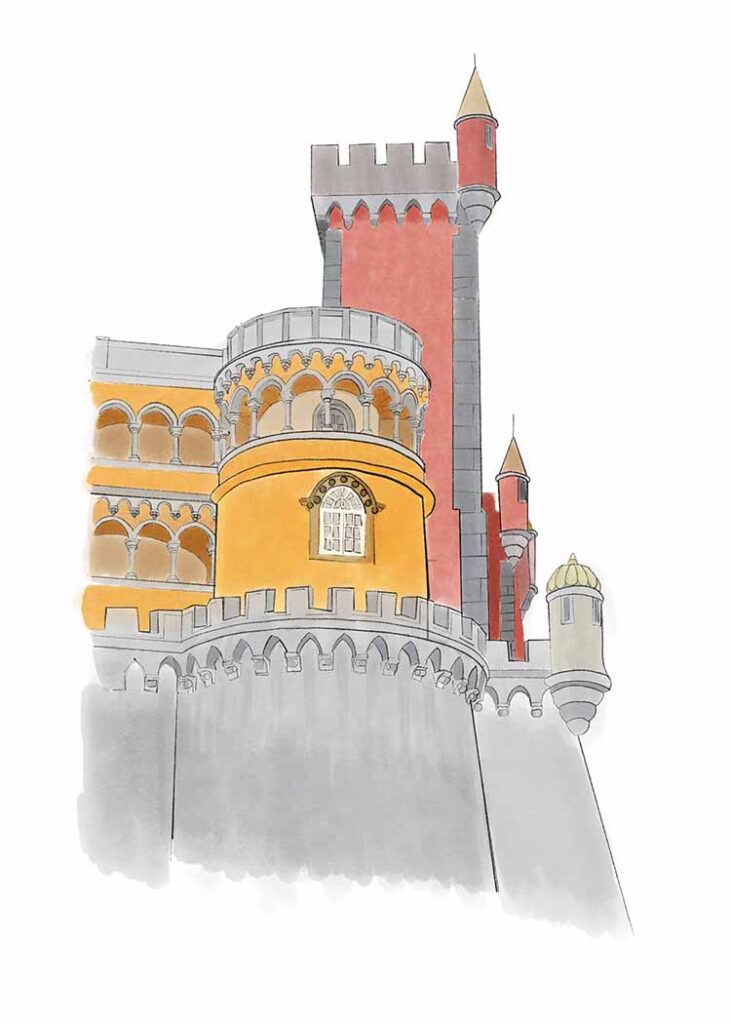
Palácio Nacional da Pena overlooks the parish of Sintra, 16 miles (27 km) east of Lisbon, Portugal.
A cacophony of color. The fusion of design. It was so unusual to see analogous reds and yellows perched atop the Sintra Mountains. Their distinction from the green earth below and the blue sky above reminded me of a photograph from a cheap point-and-shoot: high contrast with no tonal peaks in the black and white tones.
Pena Palace is located in the Sintra-Cascais Natural Park, and requires a cozy switchback route to the top for parking. I originally was a bit nervous about the approach, recalling memories of my dad driving his Ford 150 to the top of Pikes Peak in Colorado, sparing only inches from the oncoming traffic around hairpins. Thoughts of stalling and rolling downhill to the dismay of the drivers behind me flashed through my mind.
Enough of my driving fears. You get the point.
We parked near the palace gardens and walked the remaining mile to the palace. I noticed tuk-tuks passing by with tourists. These four wheeled vespas are a common sight…in Asia. If you see them in Europe, especially advertised as “an authentic cultural experience,” recall the words “scammy” and “overpriced” to mind and your wallet will be grateful.
It is easy to expend sunlight in the gardens. The winding paths and moss-covered stone arches create their own stories for you to discover.
A dripping fountain.
A Narnian lamppost.
Locations and props that create the foundations for a wonderful novel, or a romantic painting.
Once we escaped the celestial trap, where time becomes irrelevant, the palace finally appears. Built in the 19th century, it’s winding approach and mini drawbridge made me think this was designed as a defense position for the royal Portuguese family. In actuality, it was an example of neo-gothic architecture, the current trend in 18th century Germany. More examples of this are seen in the castellated battlements and parapets, a revival of medieval values pertaining to chivalry, power, and respect for the crown.
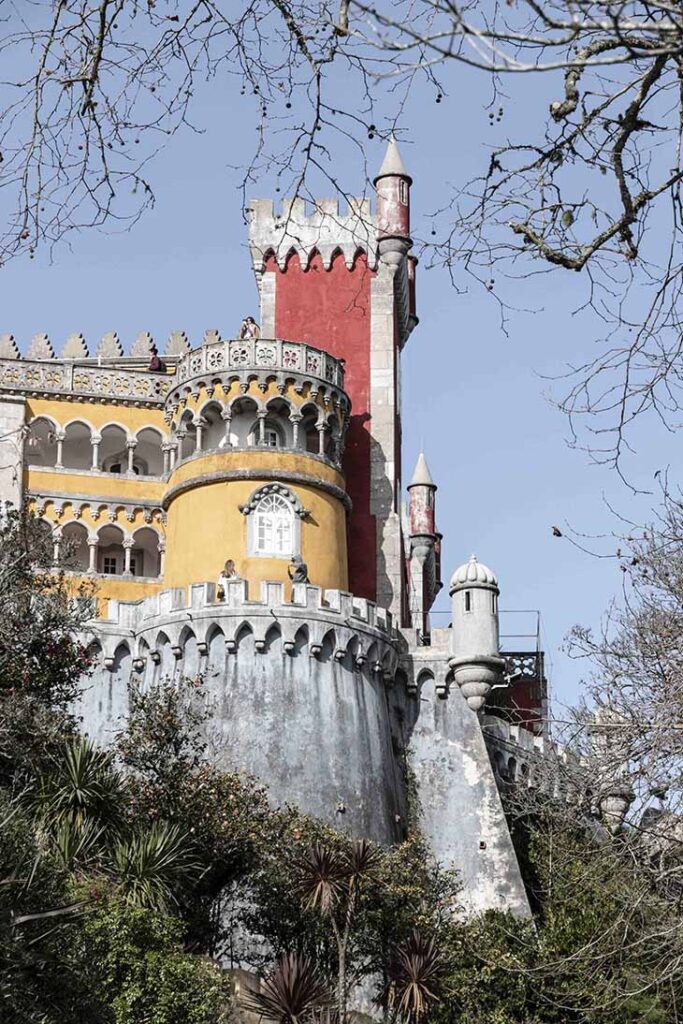
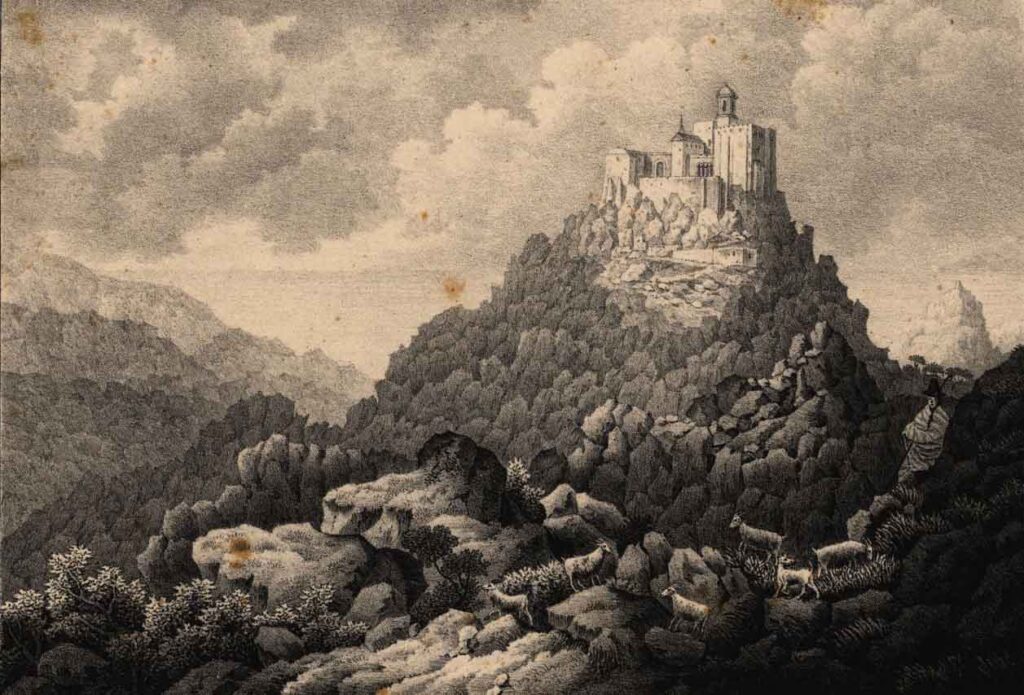
Sketch of Pena Convent, the original structure where the Palace now sits, before its near complete ruin by the Lisbon earthquake of 1755.
After we passed through the front gates, exploration of the various walkways began. The palaces unique design made for small points of interest; mini towers big enough for two people, dead ends to grand views of the gardens below, and sculptural motifs everywhere.
The completion of Pena Palace gave definition to a unique Portuguese architectural style that existed for nearly 300 years before construction. This is defined as Manueline style, named after King Manuel I. Set amid the Age of Discovery, the Empire of Portugal stretched across the globe and included Brazil in the Americas, Morocco in Africa, and China and the Spice Islands (Indonesia) in the East. Much of the traditions and styles of these colonies were brought back to Portugal and incorporated into popular landmarks such as the Jeronomous(?) Monastery, Belém Tower, and Batalha Monastery.
Examples of Maueline style seen in the Palace include nautical-related themes such as sea creatures, ancient ocean gods, and sailing rope. Also included were Islamic themes from the original Iberian peninsula’s Moorish rulers, such as horseshoe arches, extensive tilework, and onion domes.
Understandably, much of the foreign influence was not to be the prominent focus of the palace; yes, Manueline style was heavily influenced by outside cultures, but the traditional themed battlements and motifs helped unite the styles with the ongoing domestic trends in a unique and distinctive example of the Portuguese Empire.
In researching much of this information after I returned to my home country, I noticed an exclusion of the Palace from many architectural books. My initial thought was because of its insignificance among some more notable giants such as Neuschwanstein Castle in Germany, or the Hagia Sophia in Turkey. However, understanding the complexity and unification of styles weaved throughout each room, space, and angle of Pena Palace, my conclusion is that any categorization underneath neo-Gothic, Romanticism or Moorish to name a few, would give it sufficient analysis and appreciation. Rather, this blog post will have to suffice for now.
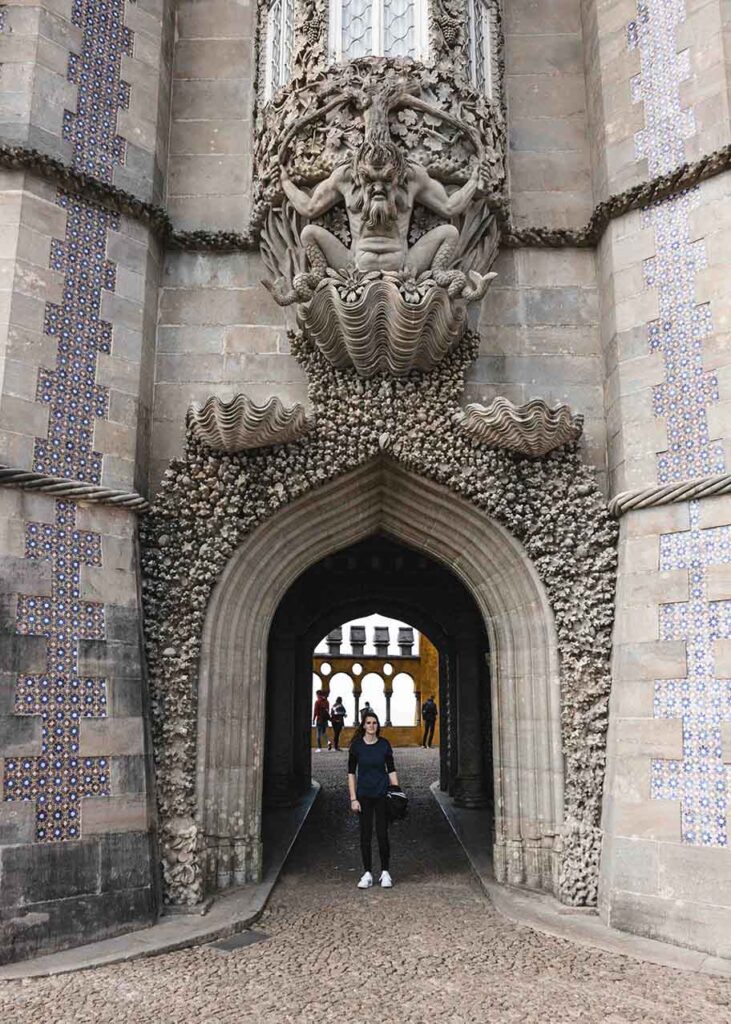
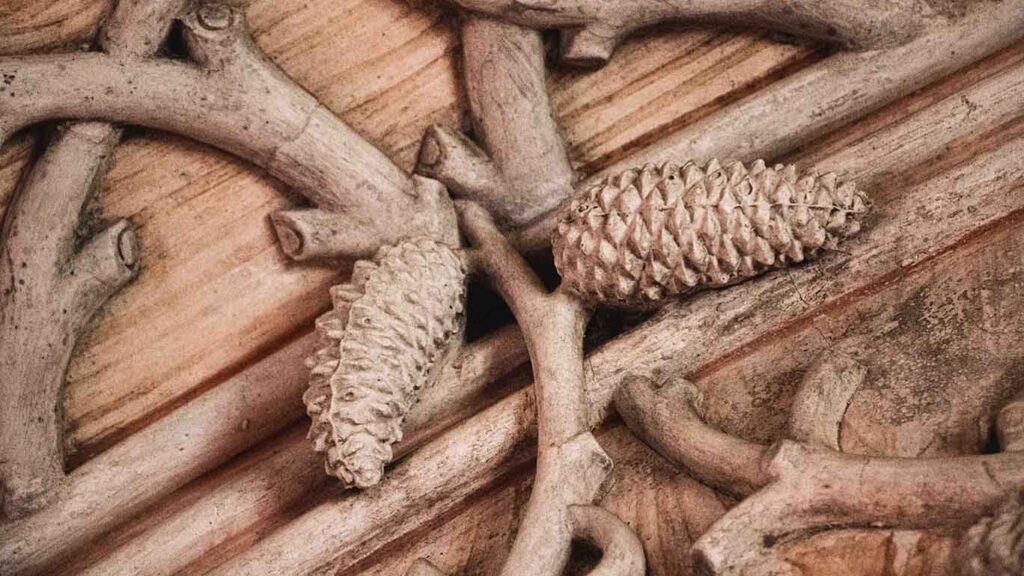
Construction began
Housed
One of the
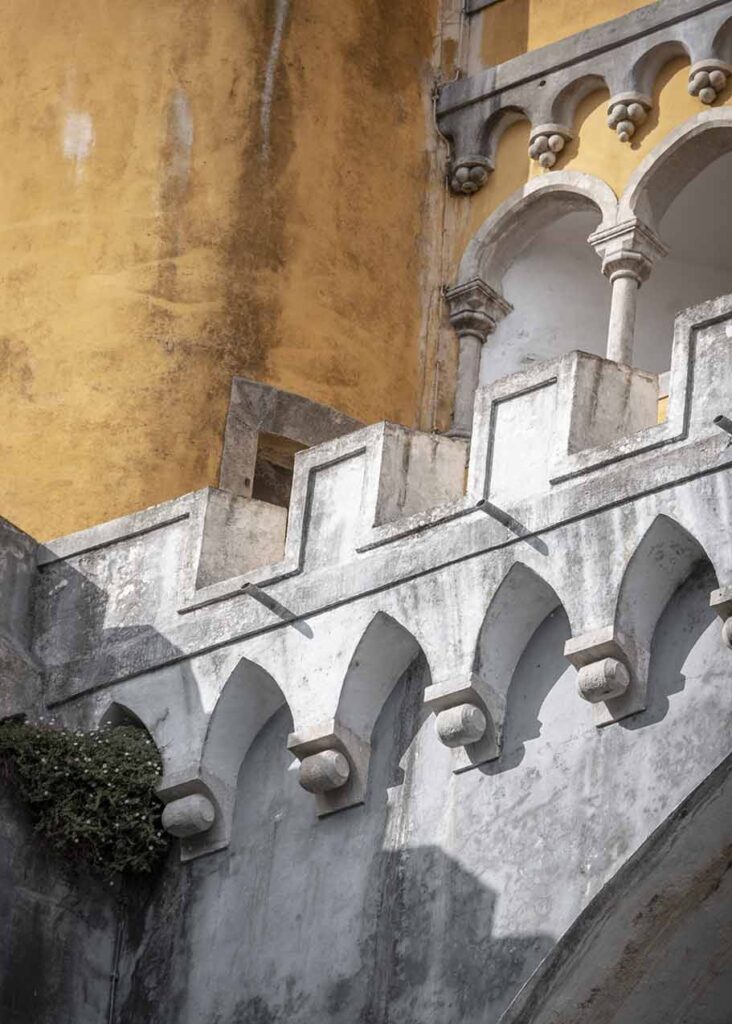

Before I met Kaelin, I didn’t fully appreciate the beauty and intricacy of castles. Majority of my attention when travelling abroad focused on churches and cathedrals (which I will give my thoughts on in a later post). My initial opinion of castles were large blocky walls, overgrown ruins and non-decorated walls.
As we walked through the various dressing rooms, bedrooms, and dining rooms of Pena Palace, I was given a more honest perspective of the art around me, thanks to many long hours of Kaelin’s castle-wisdom.
Many of the experiences I mentioned, from driving manual to appreciating castles, remind me to keep an open mind on those activities or subjects my initial gut reaction would reject. It’s not easy listening to an opposing opinion, or accepting a challenge that could result in embarrassment if failure occurs.
One of the goals I look to accomplish with Life at Random is to create a community that focuses on learning and appreciating the unknown, be that the opposite side of your opinion or finding beauty in places you have never known about.
The History of Park and
National Palace of Pena
www.parquesdesintra.pt
Manueline Architecture
www.travel-in-portugal.com
Eternal Forest Portugal
www.bnportugal.gov
Castellation
repositorio.ul.pt
Molon Labe